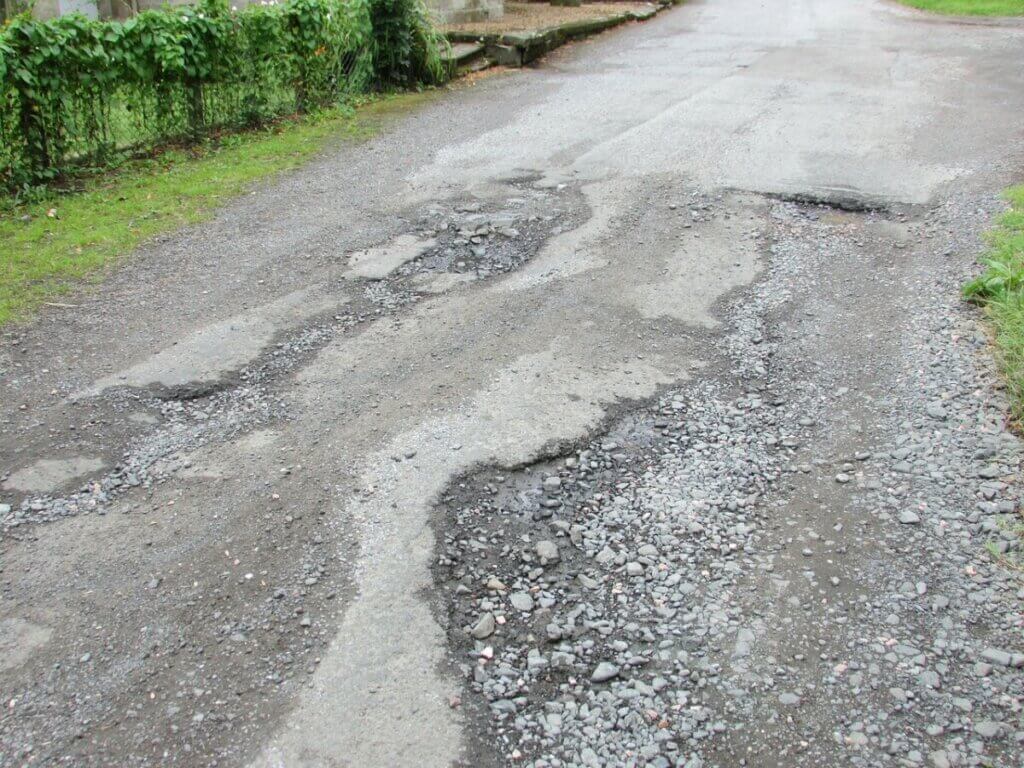Environmental Toll
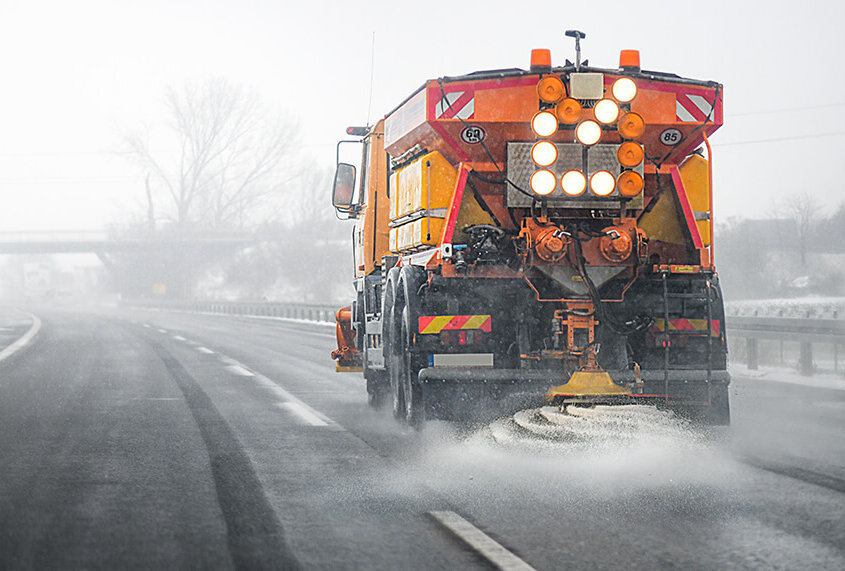
Road deicers, primarily composed of chloride-based salts such as sodium chloride (rock salt), calcium chloride, and magnesium chloride, have become staples for winter road maintenance. Half a million tons of salt are deployed annually, valued for their effectiveness in melting snow and ice while being affordable.
A paper from Environmental Science & Technology highlights the broader consequences of chloride-based deicers, and notes that they can have a high impact on air quality, vegetation, and water quality.
When applied, deicers are crushed and kicked up by passing vehicles, releasing tiny particles into the air. These particles can be inhaled potentially aggravating respiratory problems like asthma and bronchitis. Ecosystems near salted roads face salinity issues, affecting plant life and aquatic populations. Runoffs contaminate freshwater sources and accelerate the corrosion of drinking water infrastructure, impacting drinking water quality and harming delicate ecosystems downstream. These issues highlight the need for responsible salt use and the exploration of environmentally friendly alternatives.
Infrastructure Under Attack
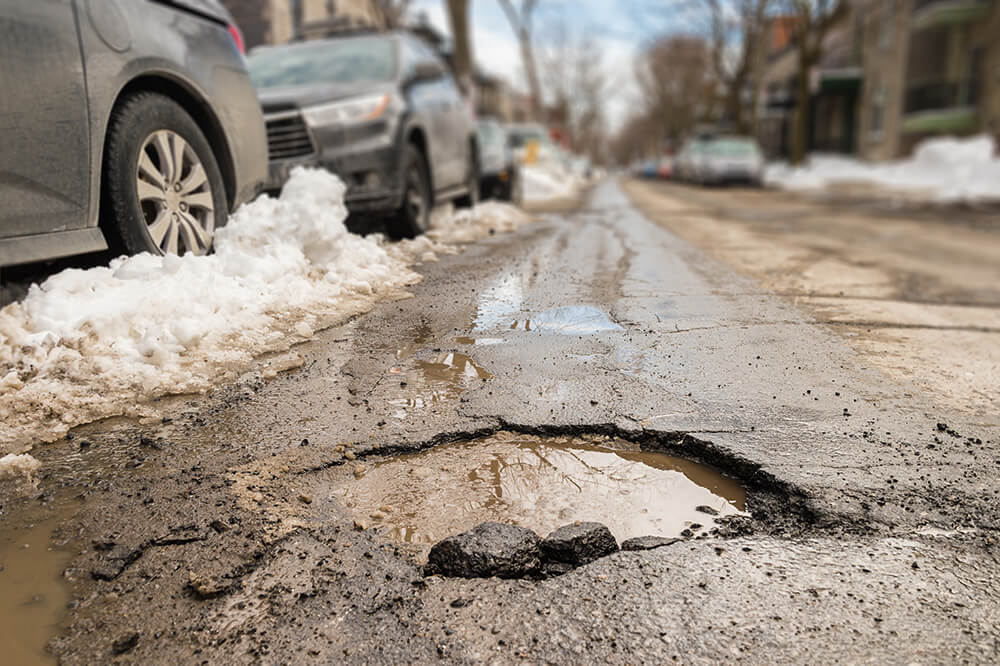
Vehicle Corrosion
Deicers can negatively impact vehicles too, causing functional, structural, and cosmetic damage. The presence of free-floating chloride ions from deicing salts within water expedites the electrochemical process between iron in metal and oxygen in the air, leading to rust and corrosion. Different components of vehicles, such as hydraulic, electrical, and structural parts, are all vulnerable to damage caused by deicers.
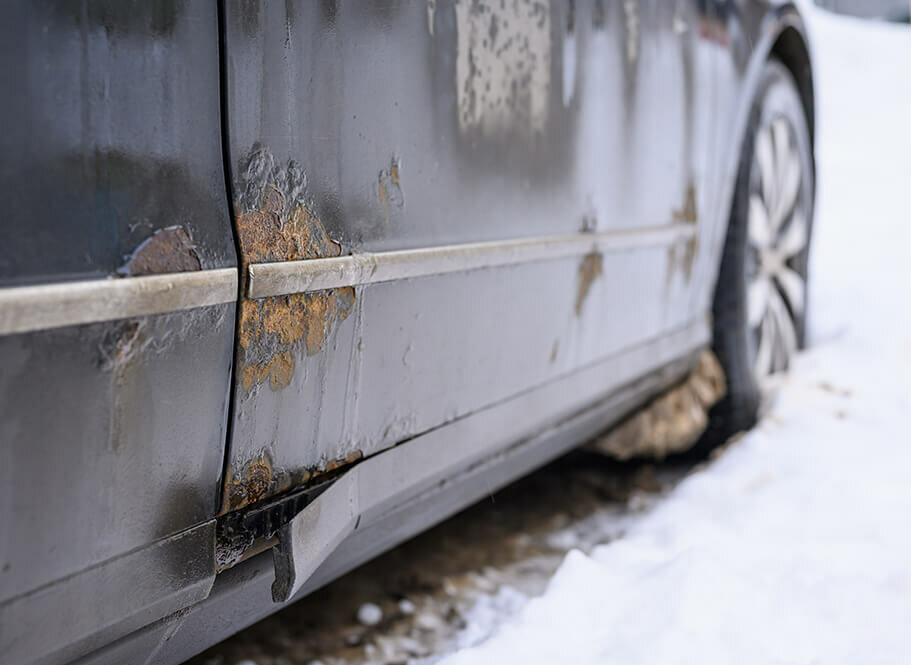
The risk is particularly high on bare metal, like the car’s undercarriage, where road salt and other corrosive chemicals can cause damage. A AAA survey found that millions of Americans are confronted with over $15 billion in rust repairs from deicing methods over a five-year period.
What Can We Do About It?
To mitigate the environmental and infrastructural damage caused by road deicers, several prevention strategies can be implemented:
- Reduce Application Rates
Municipalities and transport agencies can optimize deicer application rates to minimize environmental impact while ensuring road safety. By calibrating equipment and employing weather-responsive application techniques, excessive deicer usage can be reduced. - Pre-wetting
Pre-wetting deicers with brine or other liquids can enhance their effectiveness and reduce the overall amount needed for deicing operations. This method not only conserves resources but also minimizes chloride runoff into water. Research conducted by the Transportation Research Board (TRB) (2009) has shown that pre-wetting deicers can improve adherence to road surfaces and reduce bounce and scatter, resulting in more efficient deicing and reduced environmental impact. - Anti-Icing Techniques
Anti-icing involves the proactive application of deicers before a snowstorm to prevent ice from bonding to road surfaces. By treating roads preemptively, transportation agencies can reduce the reliance on chemical deicers during and after snow events, thereby minimizing environmental impact. According to a report by the American Public Works Association (APWA) (2006), anti-icing programs have been shown to reduce salt usage by up to 30% while maintaining high levels of roadway safety. - Vegetation Buffers
Planting vegetative buffers along roadsides can help intercept and filter runoff water, reducing the amount of deicer chemicals entering streams and rivers. Vegetation buffers not only mitigate environmental damage but also enhance roadside aesthetics and promote biodiversity. Research published in Ecological Engineering (Naiman et al., 2002) suggests that vegetative buffers can effectively trap and remove contaminants from runoff water, including chloride from road deicers.
Are There Alternatives?
The good news is innovative solutions are emerging. Snow & Ice Salts & Chemical Unlimited is exploring promising alternatives like calcium magnesium acetate (CMA), which is less damaging to the environment and infrastructure while still melting ice effectively. It is as corrosive as normal tap water and can be effective in preventing road ice formation down to around -17.5° F.
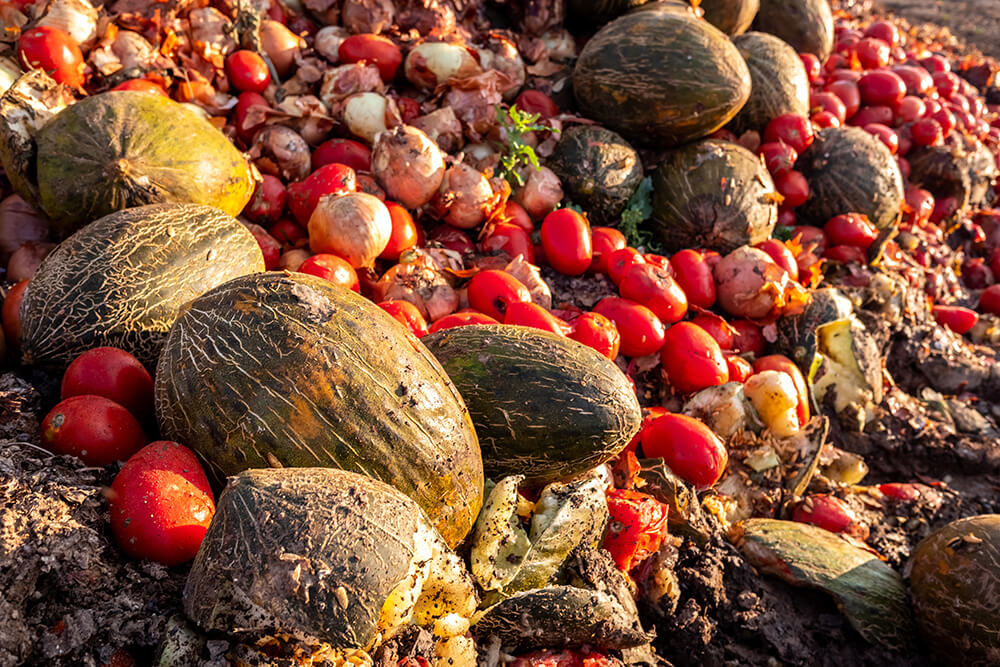
Another alternative involves the use of agricultural waste to develop new road deicers. For example, a mixture developed from waste grape skins have been found to cause no harm to aquatic environments and melt ice faster than traditional deicers.
While these alternatives offer positive benefits, such as being environmentally friendly, safe for animals, and less corrosive to vehicles and infrastructure, their limited use may be attributed to factors such as cost, effectiveness in extreme wintry conditions, and the need for further research to determine their environmental safety. Despite their existence, broader implementation of sustainable deicers requires tackling hurdles such as limited public knowledge, resource limitations, and the need for comprehensive analytical tools.
The Road Ahead
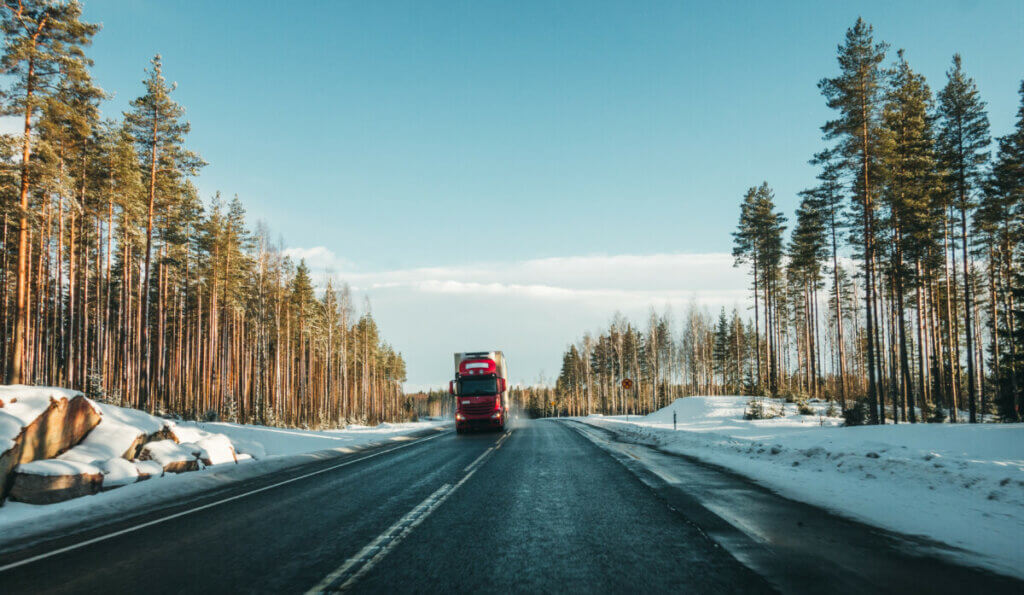
Winter deicers benefit our safety on winter roads, but their hidden consequences demand our attention. From environmental concerns to infrastructure degradation and vehicle damage, the full picture goes beyond immediate safety advantages. Minimizing the negative environment and infrastructural impacts of rock salt use, exploring alternative solutions, and advocating for sustainable practices are all crucial steps towards mitigating these unintended consequences. Let’s keep the roads clear while safeguarding our environment and infrastructure for generations to come.
Michelin Mobility Intelligence can help communities proactively mitigate the long-term effects of deicers through Better Roads automated road assessments. Objectively measuring the degradation of the roads in a network can help road managers and public works directors identify and treat damage before it becomes more severe. Opting for an automated road assessment is an easy way to start measuring yearly impact, and our team can help you get started.


